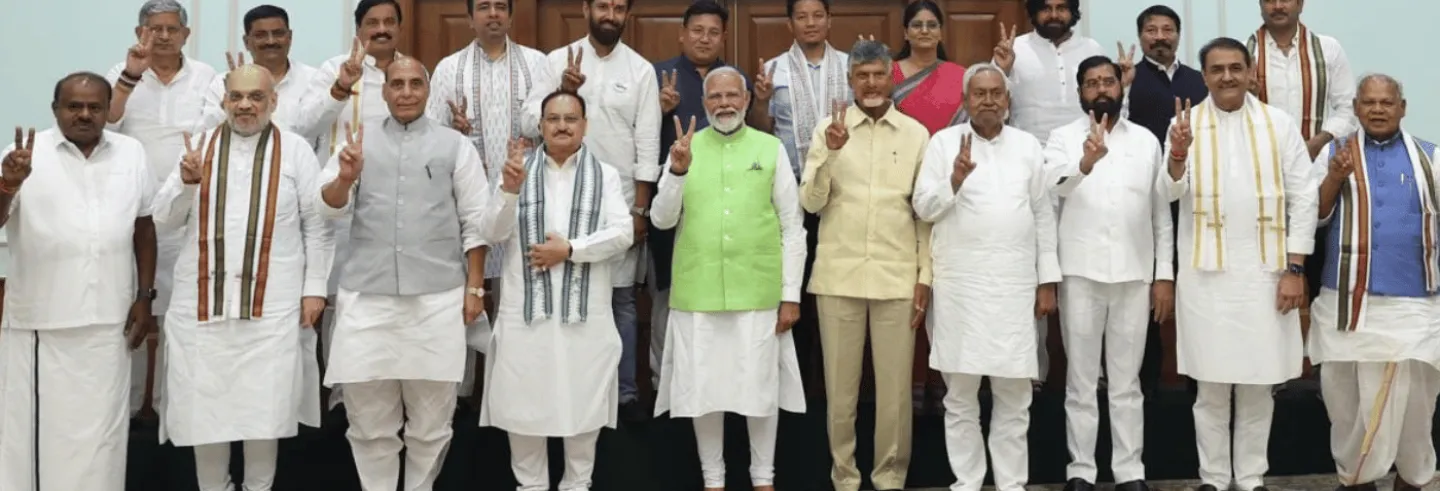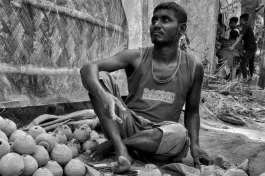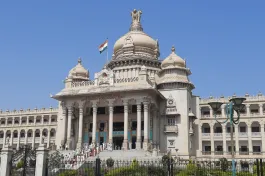Of the 948 million people registered to vote in India, 642 million did in the 2024 general election for the 18th Lok Sabha. Nearly 220 million of the voters were less than 29 years old, and going by estimates of the turnout, 150 million or more of them should have voted in this election. This indicates that one in every four voters was 29 years old or younger.
To them, the composition of the 15th Lok Sabha that came in after the 2009 election may be a hazy memory—it was a collation government of myriad parties that earned the right to govern the country for the next five years. Many of this group may not even be aware that the 14th Lok Sabha that was voted in in 2004 also produced a coalition government, as did all the other Lok Sabhas going back to 1989.
Eight of the 17 Lok Sabhas since Independence have thrown up coalition governments. So, till 2024, there have been coalition governments on the treasury benches for 47% of the lower house of Parliament’s time. If we add the 18th Lok Sabha, by 2029, 50% of the lower house’s time since Independence would have seen one coalition government or the other.
This is an important reminder to those of the electorate who have not seen a coalition government in their adult life, and to those whose memories may be blurred. It is not their fault. The presidential-style pageantry in the last decade led many to believe that a larger-than-life personality with a brute majority in Parliament somehow represented a vibrant democracy.
The mainstream media sang paeans of praise, and the judiciary chose to operate with a long rope. How could a large part of the electorate not be impressed by this blockbuster performance?
From this unilateral set-up emerged demonetisation, the Citizenship Amendment Act (CAA), the National Register of Citizens (NRC), and the farm laws, which were later withdrawn. From this dispensation emerged a disproportionate focus on highways, corridors, missiles, and guns at the cost of public health, education, and welfare support. Capital markets were delighted and so were millions of investors.
The new parliament building, meanwhile, was dressed up in new upholstery, but the microphones of opposing voices were muted, before they were debarred wholesale. The mainstream media sang paeans of praise, and the judiciary chose to operate with a long rope. How could a large part of the electorate not be impressed by this blockbuster performance?
In addition, they could not be blamed for believing stories about coalition governments, which said that they were all khichdi sarkars, whose members constantly bickered while making money on the side. Now, to the shock of many, the election result has made a coalition government inevitable at the centre. They fear it may mean anarchy. But they would do well to take note of three important aspects.
First, India’s democracy is not a presidential but a parliamentary one. People elect a representative from the area they reside in. The representatives usually, but not always, belong to political parties. The party with a majority of representatives elects its leader, who becomes the prime minister of the country. Under this arrangement, the question of who will be the prime minister is inconsequential when an election comes around. Paramount though are the manifestoes of the competing political parties, or the tenets of a common minimum programme if they are fighting as an alliance.
Nobody who voted in 1991 thought they would see P.V. Narasimha Rao as the prime minister of the country. The parliamentary arrangement and the Constitution aim to protect the country from personality cults and single-minded pursuits that do not sit well with its diversity. While the personality of a candidate does play an important role in shaping a voter’s decision, it should ideally not be the sole criterion. Voters should ask themselves if they are voting for a plan of action and a person who will truly represent their interests. Or, are they voting for a personality who will be at the top, no matter how mediocre or ineffective their representatives?
Those sceptical about coalition governments must note that closer home, be it economic liberalisation, or the Mahatma Gandhi National Rural Employment Guarantee Act it was one coalition government or the other that delivered.
Second, they should count the number of countries in Europe where a number of parties come together to form coalition governments in each of them—as has been happening for a number of decades. They should then plot the ranking of each of these countries on the United Nations’ Human Development Index.
It will be a sobering exercise. It will show that none of these countries are in grave trouble or intolerably corrupt. Take the tenure of German Chancellor Angela Merkel, who is considered one of the most successful chancellors her country has had since the Second World War. Her unbroken tenure of 17 years (2005–2021) saw Germany at the centre of the European Union. She headed a coalition of her party, the Christian Democratic Union (CDU), with the Social Democratic Party of Germany (SPD) in her first stint, then with the Free Democratic Party (FDP) in her second stint, and back with the SPD in her third stint.
Those sceptical about coalition governments will be surprised to note that closer home, be it economic liberalization or the Mahatma Gandhi National Rural Employment Guarantee Act (MGNREGA), it was one coalition government or the other that delivered. Some of the best years of the stock market, between 2000 and 2012, were under an era of three coalition governments.
Coalition governments are among the necessary ingredients of a parliamentary democracy, especially in a country as diverse as India. They ensure representation counts, and they ensure checks and balances prevail against dominant persons or blocks with plans that do not benefit the many.
Nothing exemplified this better than the Agniveer policy instituted by the Narendra Modi-led government in the 17th Lok Sabha. While this appeared to be an exercise in rationalising and modernising the armed forces to those without any stake in an army job, seasoned analysts could only see grave flaws in it. Unilaterally pushing the Agniveer policy through Parliament without thoroughly evaluating its pros and cons would be a disaster for the aspirants and for the capability of the armed forces, they pointed out. But the government ignored it and went ahead with its implementation.
The Bharatiya Janata Party (BJP) received a drubbing in many places where thousands of aspirants seek jobs in the armed forces. This should serve as a case study to those with dogmatic preference for a CEO-style governance model. Governing a country is not the same as running a company. There are hierarchies in all companies and all are not equal, and the capital and risks belong to only a few in them. In a democratic country, everyone is equal, and everyone is equally invested in it.
The tally showcases the chasm between those who voted for that half-built but fully inaugurated temple thousands of kilometres away and those who stayed next to it but did not vote for its builders.
Third, those who are surprised by the result need to accept that the verdict reflects voices that were muted for the last 10 years. It shows the alternative reality of the hopelessness stemming from the lack of jobs in the hinterlands; of the despair of leaked examination questions taking away the best years of young people; of inflation breaking common people’s backs; of farmers forever remaining on tenterhooks; and of the difference between Hindutva and Hinduism. The tally showcases the chasm between those who voted for that half-built but fully inaugurated temple thousands of kilometres away and those who stayed next to it but did not vote for its builders. It showcases the chasm between the ecstasy of those who click selfies with Vande Bharat trains and momentarily feel like they are in Europe and the frustration of those who travel 36 hours packed like sardines in trains because there is a shortage of affordable seats. While many voted for the machismo that abrogated the special status of their fellow citizens far up in the North, voters there reposed their faith in a jailed activist fighting for their special status.
Those in shock over the results need to realise how much India's parliamentary democracy yielded to one strongman in the last decade. We hope for a comeback of noisy and crowded press conferences asking tough questions of perspiring authorities. We hope to see inter-governmental panels with a spine that will deliberate drafts of bills before they are put up for voting. We expect new courtships and break-ups between parties. We hope angry editorials and counterpoints will re-emerge in the press. We hope to see reliable data, an accurate census, and a report card on the government’s performance. This has to happen by default, not when citizens knock on the doors of the judiciary.
We must welcome the revival of our parliamentary democracy and the coalition government in New Delhi just as we welcome the monsoon rains that bring new life to our parched land.
Ankur Bisen is a Senior Partner at Technopak Advisors, and the author of Wasted: The Messy Story of Sanitation in India, A Manifesto for Change (Macmillan; 2019). The author is on X: @AnkurBisen1










